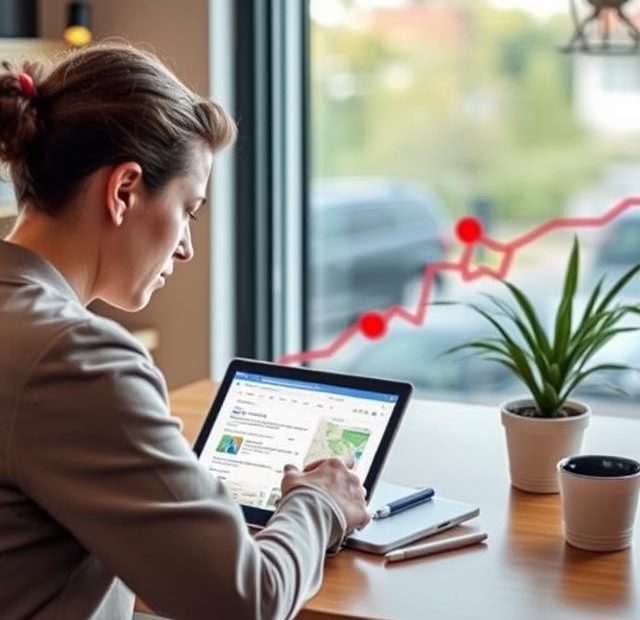In today’s digital world, local businesses can’t rely on word-of-mouth alone. Most customers turn to Google Search before deciding where to shop, eat, or get services. So, if your business isn’t showing up in local search results, you’re missing out on a huge chunk of potential customers.
In this blog, I’ll walk you through proven strategies on how to get local customers from Google Search — even if you’re not tech-savvy. Let’s get started!
1. Create or Claim Your Google Business Profile (GBP)
This is the single most important step. Google Business Profile (formerly Google My Business) is your business’s online storefront. When someone searches for “restaurant near me” or “plumber in [your city],” Google shows a local map pack, and your GBP is what powers that.
How to do it:
-
Visit google.com/business
-
Sign in with your Google account
-
Add your business name, address, phone number, and category
-
Verify your business (via postcard, phone, or email)
Pro tip: Add photos, business hours, and FAQs to make your listing more attractive and informative.
2. Use Local Keywords on Your Website
To help Google match your business with local searches, you need to include location-based keywords on your website. If you’re a bakery in Miami, don’t just write “best cupcakes” — say “best cupcakes in Miami.”
Where to add these keywords:
-
Homepage title and meta description
-
H1/H2 tags
-
About Us and Contact pages
-
Service pages (e.g., “Wedding Cakes in Miami”)
Use tools like Google Keyword Planner or Ubersuggest to find what people in your area are searching.
3. Get Listed in Local Directories
Besides Google, other online directories help boost your visibility and search rankings.
Must-have listings:
-
Yelp
-
Bing Places
-
Apple Maps
-
Facebook
-
YellowPages
-
Local Chamber of Commerce sites
Make sure your NAP (Name, Address, Phone Number) is consistent across all platforms.
4. Encourage and Respond to Customer Reviews
Positive Google reviews influence your ranking and customer trust. 87% of consumers read reviews before choosing a local business.
Tips to get more reviews:
-
Ask happy customers politely (in person or via text/email)
-
Use QR codes linking to your GBP review page
-
Respond to all reviews — good or bad — to show you care
Important: Never buy fake reviews. Google can penalize your listing.
5. Optimize for Mobile Search
Most local searches happen on mobile. If your website isn’t mobile-friendly, customers will bounce.
Quick mobile tips:
-
Use a responsive website design
-
Make sure your phone number is clickable
-
Add a map or embedded Google Maps on your contact page
-
Reduce image sizes for faster loading
Google’s Mobile-Friendly Test Tool is a great place to start.
6. Create Local Content
Local content helps connect you with nearby customers and shows Google that your site is relevant for your area.
Ideas for local content:
-
Blog posts about community events
-
Local guides (e.g., “Best Breakfast Spots in Downtown Miami”)
-
Case studies from nearby clients
-
Collaborations with local influencers or businesses
This not only helps your SEO but also builds community engagement as well.
7. Use Structured Data (Local Business Schema)
This one’s a bit technical, but it’s powerful. Structured data helps search engines better understand your business info.
Benefits:
-
Enhances your search listings with ratings, hours, and more
-
Increases chances of showing up in Google’s rich results
If you’re using WordPress, plugins like Rank Math or Yoast SEO can help you add local schema easily.
8. Run Local Search Ads
If you want faster results, Google Ads can put you at the top of local searches.
Try this:
-
Set up a local campaign targeting your city or zip code
-
Use “location extensions” to show your address in the ad
-
Track conversions (calls, directions, etc.) through Google Ads
You don’t need a huge budget. Even $5–$10 per day can drive leads.
9. Track Your Performance with Insights
After setting everything up, keep track of what’s working. Your Google Business Profile has built-in Insights showing:
-
How many people found you via search
-
What search terms did they use
-
How many called, visited, or requested directions
You can also use Google Analytics and Search Console to dive deeper.
Final Thoughts
Getting local customers from Google Search isn’t about luck — it’s about visibility. The more accurately and completely you present your business to Google, the more likely it is that nearby customers will find you.
Start with the basics: claim your Google Business Profile, use local keywords, and ask for reviews. From there, keep improving and tracking your results.
Remember, your customers are already searching for what you offer. The goal is to make sure they find you, not your competitor.
Also, you can learn more about Online Reviews here.
